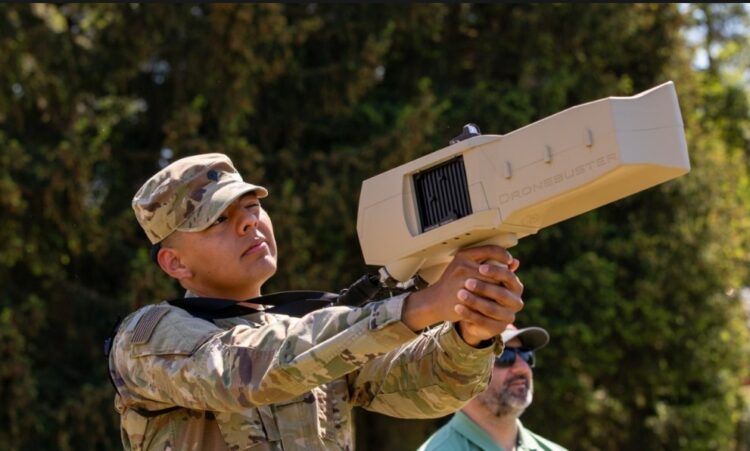An Emerging Need for Counter-Unmanned Aerial Systems
With the rapidly growing use of drones in both recreational and professional capacities, managing the potential risks associated with unauthorized or malicious use has become crucial. Small drones, commonly known as Unmanned Aerial Systems (UAS), present unique challenges to security and privacy due to their size, versatility, and ease of access. This situation has necessitated the development of effective countermeasures, among which the Dronebuster stands out as a crucial tool.
What is the Dronebuster?
The Dronebuster is an innovative handheld counter-drone tool designed specifically to neutralize threats from small UAS by disrupting their control signals. Unlike traditional methods that can either be cumbersome or require complex infrastructure, the Dronebuster offers a portable and user-friendly solution for frontline personnel. Its application ranges from military environments to private security operations, ensuring that airspace remains a controlled and safe environment.
Key Features and Specifications of the Dronebuster
The Dronebuster is noted for several vital features that enhance its efficiency and reliability:
- Portability: Lightweight design permits easy transport and deployment in various situations.
- User-Friendly Operation: Designed for quick learning by operators, reducing the training time required.
- Diverse Disruption Capabilities: Capable of jamming communications between the drone and its operator on multiple frequencies.
- Range: Ability to effectively disrupt and disable drones at a range of up to several hundred meters.
- Battery Life: Extended battery life supports long-duration operations without frequent recharging.
- Durability: Built to withstand challenging environmental conditions, offering resilience in diverse operational settings.
Technical Specifications
| Feature | Description |
|---|---|
| Weight | Approximately 5 pounds |
| Range | Up to 1 kilometer depending on conditions |
| Frequency Bands | Covers 2.4 GHz, 5.8 GHz, GPS |
| Operating Temperature | -20°C to +45°C |
Applications Across Various Sectors
Security forces and private organizations alike find the Dronebuster invaluable in maintaining airspace integrity. It is particularly prominent in sectors such as:
- Military Applications: Providing forces with an easily deployable countermeasure to unexpected drone encounters, the Dronebuster is critical in securing operations and maintaining tactical advantages.
- Commercial and Private Security: Ensuring that corporate campuses and private properties are protected from surveillance or other potential drone threats.
- Public Safety: Assisting law enforcement in controlling unauthorized drone activity, particularly in event security and emergency response scenarios.
Advantages Over Other Counter-UAS Solutions
The Dronebuster offers several advantages over alternative counter-UAS technologies:
- Cost-Effective: Unlike larger systems, it does not require permanent installations or high-cost equipment.
- Instantaneous Reaction: Its handheld design provides real-time responsiveness, empowering operators to act quickly.
- Minimal Collateral Disruption: Focused jamming capabilities ensure minimal interference with other communication devices within the vicinity.
Looking Forward: The Future of Counter-Drone Technology
As drone technology continues to evolve, so too will the need for countermeasures like the Dronebuster. Ongoing research and development are expected to yield even more sophisticated systems, potentially integrated with artificial intelligence to predict and respond to drone threats more effectively. Additionally, future models may include features such as longer ranges, enhanced portability, and automated drone identification and tracking capabilities.
The Dronebuster symbolizes a strategic response to a modern-day challenge, a testament to innovative approaches in dealing with emerging technologies. Its role in securing airspaces shows just how crucial adaptive solutions are in keeping pace with technological advancements, ensuring that benefits are maximized while mitigating associated risks.









